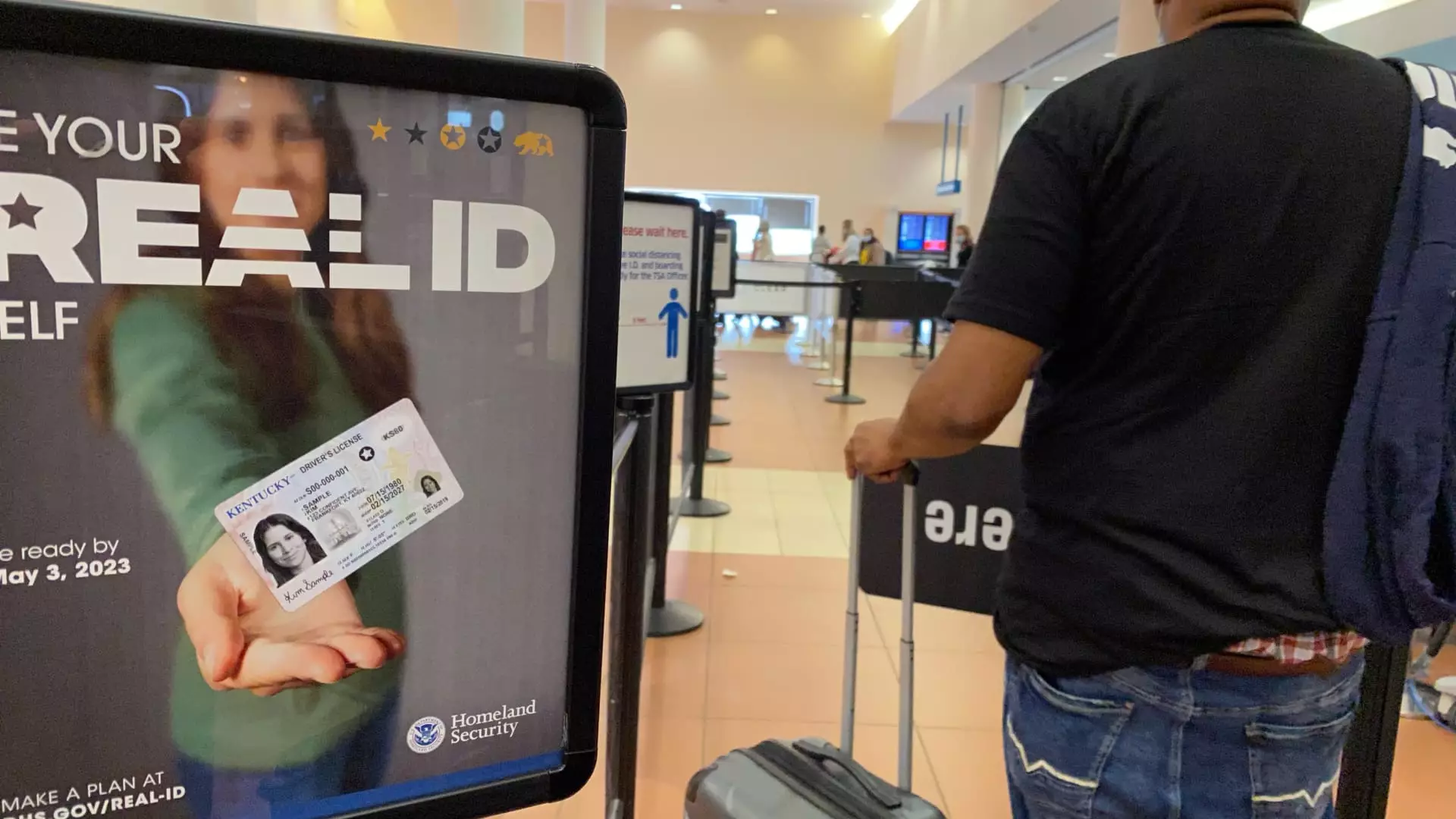As the aviation industry strives for enhanced safety in the post-9/11 world, the federal government’s push to enforce Real ID requirements takes center stage. Starting May 7, travelers will be required to present a Real ID-compliant identification to pass through airport security for domestic flights. This sweeping mandate has sparked urgent calls for citizens to scramble and ensure their IDs meet the federal standards. However, the practical realities behind this implementation raise significant concerns about accessibility, efficiency, and what it means for the average traveler.
The insistence on Real ID compliance has been met with mixed reactions—while 81% of individuals already possess Real ID-compliant identification, a considerable portion of the nation is still caught unprepared. Advocacy groups and everyday citizens alike have expressed frustration. Appointments at motor vehicle departments, where citizens must get these updated IDs, are quickly filling up, yet many locations remain understaffed or operate with limited hours. This echoes a troubling trend in modern governance: rules are often imposed without considering the real-world impact on citizens’ ability to comply.
The Government’s Flawed Communication
While there have been signs reminding travelers of the Real ID requirements, the information dissemination has fallen short of expectations. Federal and state officials have stepped up their messaging, but it often seems belated and frenetic. Many airline companies, such as Frontier, have taken it upon themselves to inform their customers through emails and notices on their websites. Yet, one could wonder why systemic alerts have only intensified as the deadline looms large.
Why has it taken so long for the federal government to implement such a critical requirement? The Real ID Act was passed back in 2005, primarily as a response to the vulnerabilities highlighted by the 9/11 terror attacks. The intention behind it makes sense—but when combined with repeated delays and postponements, the effectiveness of the Real ID initiative itself becomes muddled. It often feels as though travelers are being asked to run a gauntlet of red tape with minimal support, and the potential for chaos at airports paints a daunting picture.
The Real Impact on Travelers
Beyond the confusion, the practical implications of not having a Real ID extend far beyond mere inconvenience. The TSA has warned passengers without the correct identification could face delays, additional screenings, or even outright rejection from the security checkpoint. The TSA spokesman’s assertion that “identity verification is a lynchpin in security” is a sobering reminder of the seriousness that accompanies the enforcement of these regulations. However, the rhetoric suggests a disregard for the underlying reality: we face a societal infrastructure that often prioritizes compliance over convenience.
Moreover, this push for compliance inadvertently creates a two-tiered system among travelers. Those who can navigate the bureaucratic maze and secure their Real IDs will glide through security with relative ease, while others may be left stranded, missing their flights and facing the consequences of a system that appears to be less about safety and more about maintaining an ever-expanding bureaucracy.
Frustrations With the System
The Real ID requirements, while undoubtedly grounded in the pursuit of security, foster shallow frustration amongst those who must live in accordance with these stringent regulations. The lack of preparation, both from the government and the general populace, further exacerbates the problem. Kicking the can down the road with a slew of deadline extensions means that when the hammer finally falls, many will be left scrambling. This situation breeds anxiety; the fear of missing a flight due to an administrative hiccup weighs heavily on the minds of travelers.
In a time of such technological advancement, it is perplexing that obtaining essential identification remains shrouded in layers of unnecessary bureaucracy. This suggests an overarching philosophy of governance that values control over fundamental ease—a philosophy that is neither sustainable nor fair. As citizens labor under the weight of these mandates, the true cost of enhanced security is emerging; it seems ordinary travelers will bear the brunt of a cumbersome system that was never tailored to meet their needs.
The Real ID initiative may have noble intentions rooted in national security, but its execution reveals significant flaws that threaten to disenfranchise a significant portion of the traveling public. The urgency in government messaging, while well-intentioned, fails to account for the realities of everyday life, ultimately transforming travel from a straightforward experience into a burdensome task fraught with anxiety.


Leave a Reply